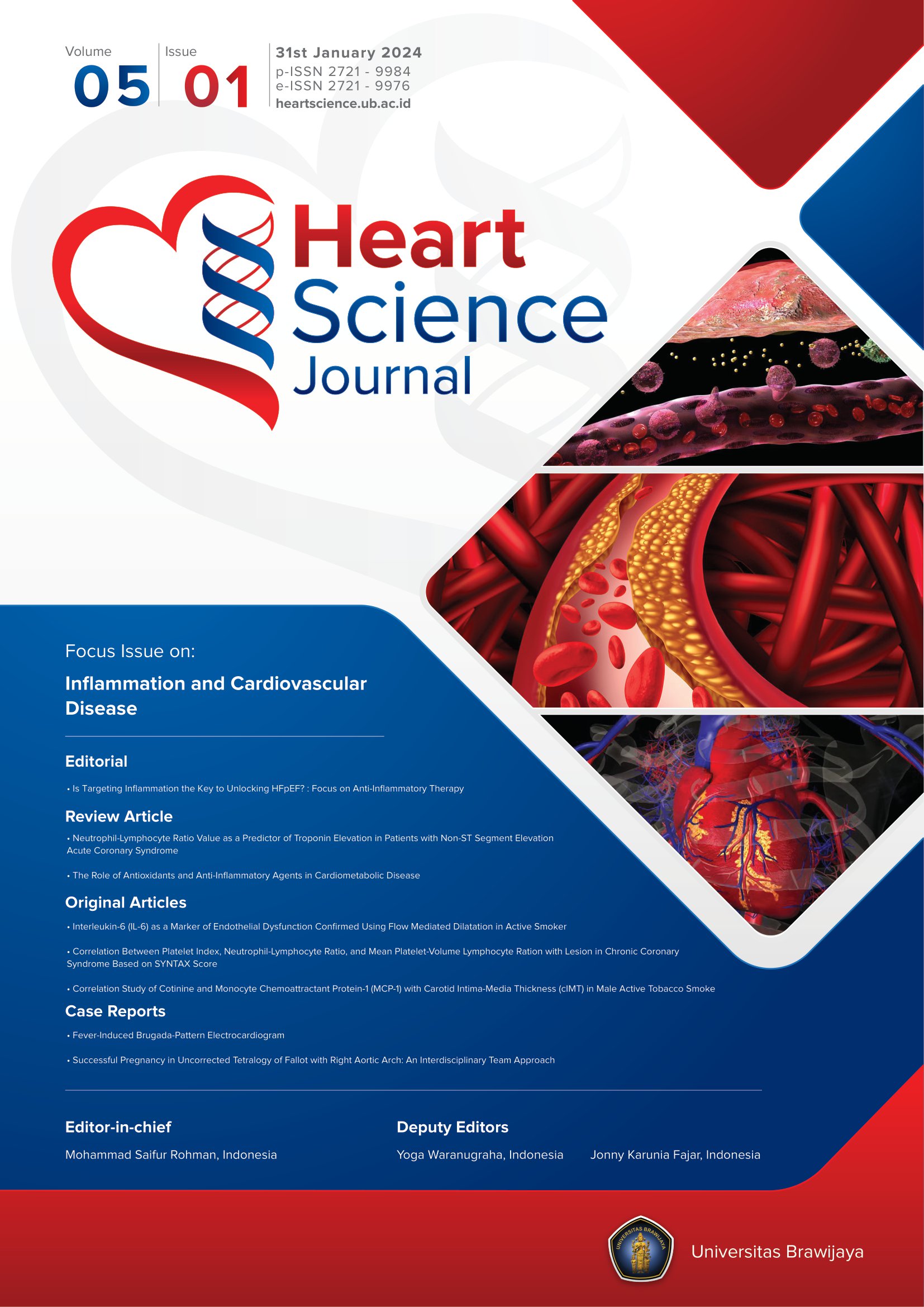Good Physician Adherence to Guideline-Directed Medical Therapy Associated with Lower Patient Mortality and Hospitalisation Rates Across The World
Abstract
Keywords
Full Text:
PDFReferences
Brown SB, Shannon RP. Improving Medication Compliance in Patients With Heart Failure. Am J Cardiol. 2008;101:274-277.
Ponikowski P, Anker SD, AlHabib KF, Cowie MR, Force TL, Hu S, Jaarsma T, Krum H, Rastogi V, Rohde LE, Samal UC, Shimokawa H, Budi Siswanto B, Sliwa K, Filippatos G. Heart failure: preventing disease and death worldwide. ESC Heart Failure 2014;1:4–25. DOI: 10.1002/ehf2.12005
American Heart Association. Heart disease and stroke statistics-2007 update. Dallas, Texas: American heart Association, 2007:1-43.
Sueta CA. The life cycle of the failure patient. Current Cardiology Reviews 2015;11:2-3.
Savares G, Lund LH. Global public health burden of heart failure. Card Fail Rev. 2017;3:7-11. DOI:10.15420/cfr.2016:25:2
McMurray J, Cohen-Solal A, Dietz R, Eichhorn E, Erhardt L, Hobbs FD, Krum H, Maggioni A, McKelvie RS, Pina IL, et al. Practical recommendations for the use of ACE inhibitors, beta-blockers, aldo- sterone antagonists and angiotensin receptor blockers in heart failure: putting guidelines into practice. Eur J Heart Fail 2005;7:710–721.
Cowie MR, Komadja M. Quality of physician adherence to guideline recommendations for live-saving treatment in heart failure; an international survey. Card Fail Rev.2017;3:130-133.
Yancy CW, Januzzi JL Jr, Allen LA, Butler J, Davis LL, Fonarow GC, Ibrahim NE, Jessup M, Lindenfeld J, Maddox TM, Masoudi FA, Motiwala SR, Patterson JH, Walsh MN, Wasserman A. 2017 ACC Expert Consensus Decision Pathway for Optimization of Heart Failure Treatment: Answers to 10 Pivotal Issues About Heart Failure With Reduced Ejection Fraction: A Report of the American College of Cardiology Task Force on Expert Consensus Decision Pathways. J Am Coll Cardiol. 2018 Jan 16;71(2):201-230. DOI: 10.1016/j.jacc.2017.11.025.
Greene SJ, Fonarow GC, Vaduganathan M, et al. The vulnerable phase after hospitalization for heart failure. Nat Rev Cardiol 2015;12:220–229. DOI: 10.1038/nrcardio.2015.14
Ambrosy AP, Pang PS, Khan S, Konstam MA, Fonarow GC,Traver B, Maggioni AO, Cook T, Swedberg K, Burett JR JC, Grinfeld L, Udelson JE, Zannad F, Gheorghiade M. EVEREST Trial Investigators. Clinical course and predictive value of congestion during hospitalization in patients admitted for worsening signs and symptoms of heart failure with reduced ejection fraction: findings from the EVEREST trial. Eur Heart J 2013;34:835–843. DOI: 10.1093/eurheartj/ehs444
Arrigo M, Truong QA, Onat D, Szymonifka J, Gayat E, Tolppanen H, Sadoune M, Demmer RT, Wong KY, Launay JM, Samuel JL, Cohen-Solal A, Januzzi JL Jr, Singh JP, Colombo PC, Mebazaa A. Soluble CD146 Is a novel marker of systemic congestion in heart failure patients: an experimental mechanistic and transcardiac clinical study. Clin Chem 2017;63:386–393. DOI: 10.1373/clinchem.2016.260471.
Kubena P, Mattia Arrigo M , Jiri Parenica J , Gayat E , Malha Sadoune M , Ganovska E , Pavlusova M , Littnerova S, Jindrich Spinar J , Mebazaa A , GREAT Network. Plasma levels of soluble CD146 reflect the severity of pulmonary congestion better than brain natriuretic peptide in acute coronary syndrome. Ann Lab Med 2016;36:300–305. DOI: 10.3343/ alm.2016.36.4.300
Waranugraha Y, Rohman MS, Anjarwani S. Hemodynamic Congestion at Hospital Discharge Predicts Rehospitalization During Short Term Follow Up in Acute Heart Failure Patients Indonesian. J Cardiol 2019:40:290-300
Shah KS, Xu H, Matsouaka RA, et al. Heart failure with preserved, borderline, and reduced ejection fraction: 5-year outcomes. J Am Coll Cardiol 2017;70:2476–86. DOI: 10.1016/j. jacc.2017.08.074
Gayat E, Arrigo M, Littnerova S, et al. GREAT Network. Heart failure oral therapies at discharge are associated with better outcome in acute heart failure: a propensity-score matched study. Eur J Heart Fail 2017;18:613. DOI: 10.1002/ejhf.932.
DOI: https://doi.org/10.21776/ub.hsj.2020.001.01.1
Refbacks
- There are currently no refbacks.
Copyright (c) 2020 Heart Science Journal
License URL: https://creativecommons.org/licenses/by/4.0/









